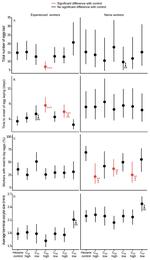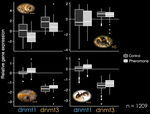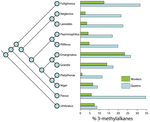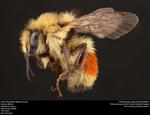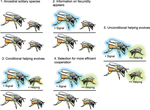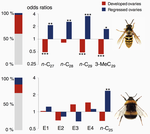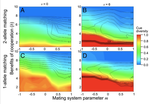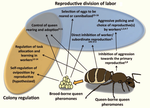Evolution in social insects
Last updated on
Oct 4, 2021
 A queen ant (Lasius niger) being attacked by her workers. Colonies sometimes ‘vote out’ queens whose cuticular hydrocarbons signal sub-par fecundity. Photo: David Nash.
A queen ant (Lasius niger) being attacked by her workers. Colonies sometimes ‘vote out’ queens whose cuticular hydrocarbons signal sub-par fecundity. Photo: David Nash.
The eusocial insects (e.g. bees, ants, wasps, and termites) are united by a remakable trait: some individuals give up the opportunity to reproduce, and instead acts as helpers to enhance the reproduction of other individuals. I am interested in how and why the social insect ‘caste system’ of queens and workers evolved, and how evolution has shaped their biology. I am especially interested in the role of queen pheromones in evolution and colony life.
Related
- Social immunity and chemical communication in the honeybee: immune-challenged bees enter enforced or self-imposed exile
- Comparative transcriptomics of social insect queen pheromones
- Onwards and upwards: a response to comments on Holman
- Building a new research framework for social evolution: Intralocus caste antagonism
- Conserved queen pheromones in bumblebees: A reply to Amsalem et al



